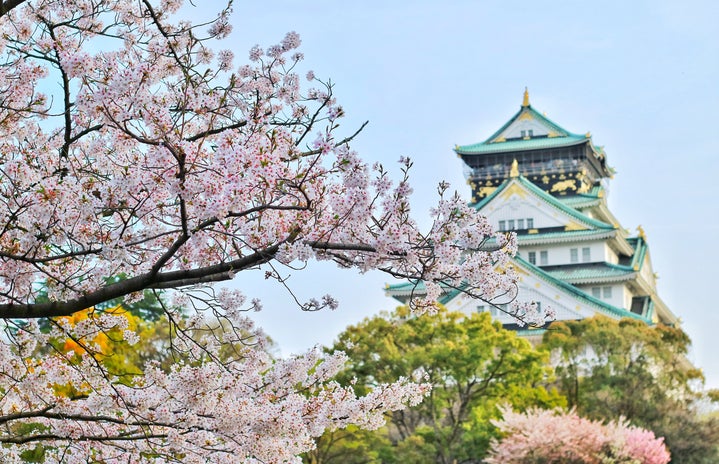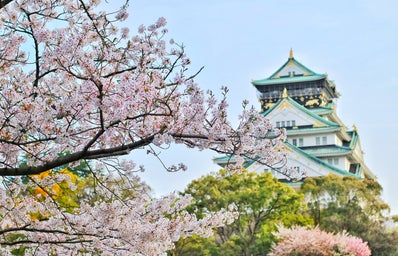One of my favorite topics to talk about is anime. Anime has taken over my free time this quarantine and opened me up to a whole new world of animation and even culture. As someone who didn’t grow up with anime, the common tropes within the medium didn’t influence me as a young girl. However, now, as a young woman and a women’s studies major, I tend to analyze the female representation in any form of media, especially anime.
For the most part, every anime fan has watched at least one show that exaggerates the body proportions of a female character. In some instances, animators go as far as creating scenes meant to overexpose the body parts of female characters as “fanservice” for male viewers. The worrisome part is not only the effect this has on young female viewers, but also the fact that these characters are often teenagers. Additionally, the portrayals of women in anime are often derived from Japanese beauty standards.
Body type in Japan
As someone who wants to travel to Japan, the idea of being shamed for my body type is a bit worrying. From reading different accounts from foreigners who traveled to Japan and received harsh criticism for not fitting the traditional Japanese body type, I can only assume the effect that could have on a person’s confidence. In Laguna Levine’s article “Being Fat in Japan,” he details his experience living in Japan and dealing with the negative reactions to his weight. Through these experiences, he recognized the issue with body weight in the Japanese culture where most people judge others based on their appearance. For example, he mentioned shopping for a shirt for his younger brother. As Levine asked for a size large, the store associate brushed him off and replied that he should go to a specialty store for people of his weight.
The sizing in Asia tends to run on the smaller side. I write this from experience, as I’ve dealt with the pain of trying to fit into an Asian size medium, which is equivalent to a US size small. Asia’s beauty standard places emphasis on weight and body proportions. For the most part, T-shirts and blouses are smaller at the top, which can cause difficulty for larger chested women.
How are women’s bodies portrayed in anime?
When I select an anime to watch, I usually choose based on the plot and find myself becoming a fan of the show for that reason. Yet, as I began to watch different shows, I noticed how in most there was at least one female character that was the butt of jokes. For example, in Fire Force, a relatively new anime, one of the female characters, Tamaki, is meant to be strong but is the victim of overly sexual scenes. Her role in the show is diminished by her constant exposure. One example would be her uniform frequently being ruined, revealing her 17-year-old body. Not only is this insulting, but it places an image in young girls’ minds of what their bodies are supposed to look like.
Another case can be found in Fairy Tail, an anime centered on two mages who are a part of a magic guild. In Fairy Tail, every female character is sexualized. From the deuteragonist to the supporting characters, we see women drawn with curvaceous bodies and exaggerated busts. Even though this is perceived to be the desired goal, some characters, such as Lucy, are made fun of for “gaining a few pounds,” thus reinforcing the idea that normal and healthy bodies are inadequate or unhealthy.
The excuse many animators and mangakas give for sexualizing these characters is that it is their duty as artists to give the fans what they want. In this case, this one-sided fan service only highlights the inequalities within representation. The female audience is given strong and capable characters, but instead of being popular for those reasons, these characters are dressed in provocative clothing and belittled because of their body types.
Proper representation is…
Ignoring the predisposed societal standards and establishing characters as complex individuals rather than one-dimensional sex objects. Alexis Brazier from Technique wrote about her despair in seeing females in anime being represented so crudely. As she sat in the audience of an anime club meeting surrounded by a majority of men, she realized the disproportion in representation within the anime medium. I related to Brazier’s experience and opinion, because as an anime lover, the trope of sexualized women is repetitive and mainly repulsive.
Creators have to understand that more and more women are beginning to watch anime. The Artifice noted that half of the people who attended the North American Anime Convention were women. As women begin to dominate anime audiences, it would be beneficial for mangakas to focus on building strong female characters. To give mangakas the benefit of the doubt, I understand that, as a writer, it is easier to stick to tropes or societal standards, but as creators, it is their duty to do right by their audiences and represent them accurately. Most importantly, it isn’t that difficult to do so. Take Sailor Moon as an example. The anime highlighted the power of several female characters and didn’t rely on inappropriate costumes to build an audience. In doing so, the anime not only became popular in Japan but across the world.
As an audience, we may not be able to change society’s structure, but we do have the power to change the way we perceive ourselves in the media. I encourage you to take a look at the different forms of media available to you and ask yourself the question, “Does this really represent who I am?”


